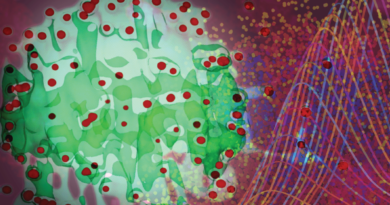How do microgels collapse?
The structural adaption of microgels to the environment involves a unique transition from a flexible, swollen finite-size macromolecular network, characterized by a fuzzy surface, to a colloidal particle with homogeneous density and a sharp surface. In this contribution, we determine, for the first time, the structural evolution during the microgel-to-particle transition.
Time-resolved small-angle x-ray scattering experiments and computer simulations unambiguously reveal a two-stage process: In a first, very fast process, collapsed clusters form at the periphery, leading to an intermediate, hollowish core-shell structure that slowly transforms to a globule. This structural evolution is independent of the type of stimulus and thus applies to instantaneous transitions as in a temperature jump or to slower stimuli that rely on the uptake of active molecules from and/or exchange with the environment. The fast transitions of size and shape provide unique opportunities for various applications as, for example, in uptake and release, catalysis, or sensing.
The full paper is available open-access via the DOI 10.1126/sciadv.aao7086.



